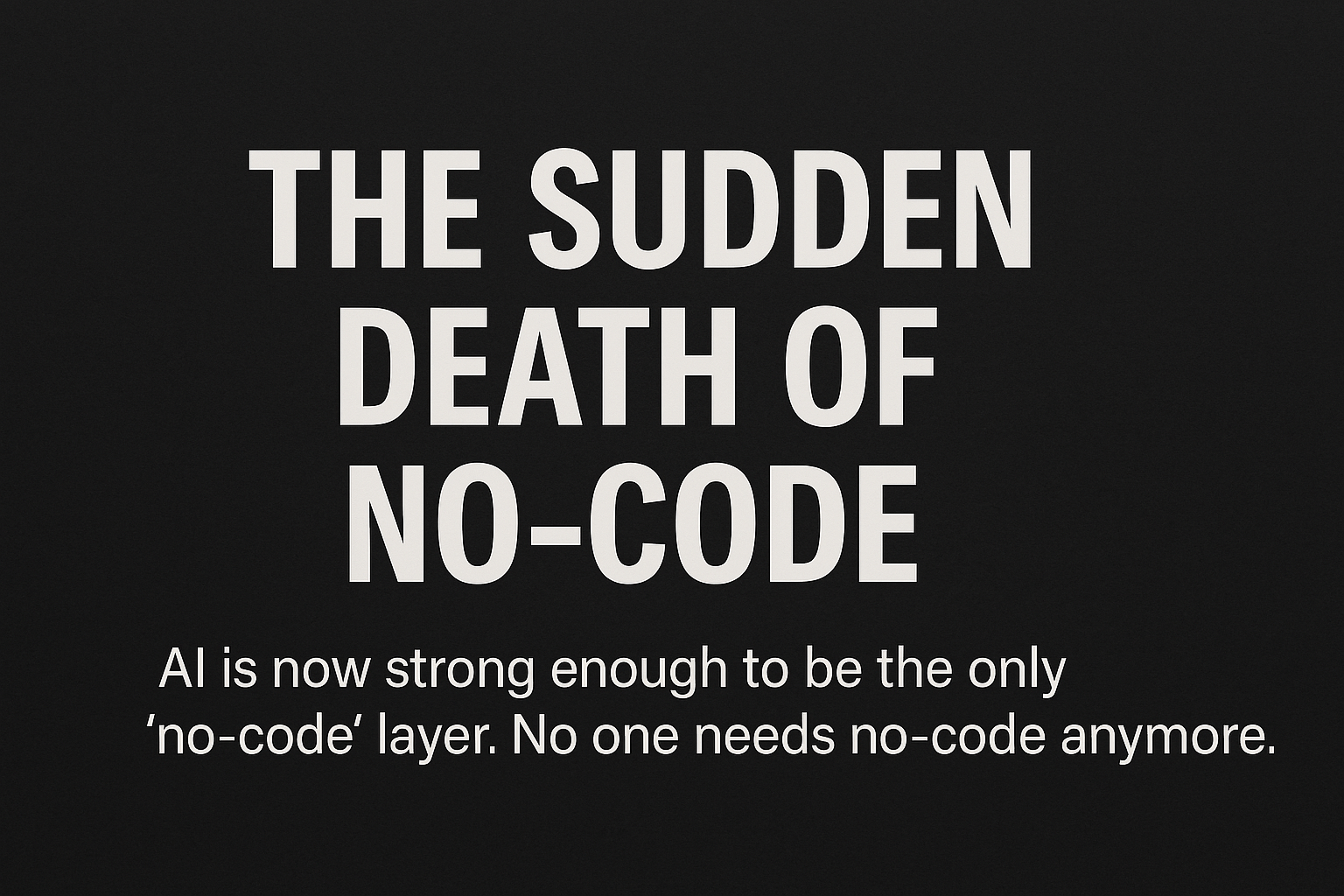Natural Language Is Now the Only No-Code Tool That Matters

For the past decade, no-code tools promised to make software creation more accessible. They lowered the barrier to entry, empowered non-developers, and accelerated experimentation. The goal was noble — to give more people the ability to build software.
But the environment has changed. Dramatically.
We’ve entered a new phase of tooling. Modern AI systems now write high-quality code, generate complete applications, reason about architecture, and respond to natural language instructions with precision. They’ve made a quiet, but total replacement of what no-code platforms once tried to offer.
This isn’t a trend. It’s a paradigm shift.
Why No-Code Is Becoming Obsolete
No-code platforms were never truly “no-code.” They were visual abstractions over traditional codebases, with strict boundaries. While they removed the need to write code, they introduced new limitations — in flexibility, scalability, and clarity.
AI systems remove those boundaries entirely. Here's how:
1. Language Becomes the Interface
You no longer need to learn a visual editor or platform-specific logic. You describe your intent in plain language, and the AI produces code that reflects it — whether it’s Python, SQL, HTML/CSS, or deployment scripts.
This doesn’t just lower the barrier — it eliminates the middle layer altogether.
2. No Platform Lock-In
Traditional no-code tools lock you into their ecosystem. If you outgrow their capabilities, you often have to rebuild your project from scratch. AI-generated code can be exported, audited, extended, or rewritten in any stack you choose — removing the risk of vendor dependency.
3. Faster, More Precise Iteration
Changing something in a no-code tool often meant reworking workflows or contending with UI constraints. With AI, it’s as simple as adjusting your instructions. You iterate as fast as you can think.
4. Greater Transparency
No-code platforms obscure the actual implementation. This can make debugging, optimization, and security review difficult. AI tools produce real, readable code. You can see what’s happening and change it if needed — no black boxes.
5. Scale and Complexity Support
No-code is well-suited for small apps or prototypes, but starts to break down as logic and integrations grow. Today’s AI tools can generate and maintain production-grade codebases, support complex business logic, and even help with testing, documentation, and deployment.
Leading Tools in the New Stack
Several AI tools are now at the center of this shift:
Claude 3.5 by Anthropic – Fast, thoughtful, and excellent at writing maintainable code and reasoning through design tradeoffs. A reliable choice for software architecture and feature implementation.
GPT-4 Turbo by OpenAI – Strong multi-step reasoning, excels at refactoring, documentation, and producing well-structured code across languages and frameworks.
Gemini 1.5 Pro by Google DeepMind – Particularly capable with multimodal input (e.g., screenshots + specs), and increasingly used for complex backend and infrastructure tasks.
Devin by Cognition – Framed as an autonomous software engineer, Devin doesn’t just generate code — it runs, debugs, and iterates on its own.
GitHub Copilot X – Deeply integrated with IDEs, it supports developers as a real-time assistant, maintaining the flow of coding without switching context.
These tools are not UI replacements or shortcuts — they’re reasoning engines that turn intent into working systems. They don’t abstract away programming; they perform it.
It Wasn't Inevitable — It Was Unexpected
The no-code movement was never misguided. It was a real response to real problems: too few developers, too much complexity, and too high a barrier for innovation. It succeeded in showing that more people wanted to build.
What we didn’t expect was that the solution wouldn’t be simpler visual tools — but smarter systems that understand language and write code better than most humans.
We thought the path to software accessibility was through abstraction. It turned out to be through understanding.
What Happens Now
AI development tools have collapsed the gap between idea and implementation. In doing so, they’ve rendered the no-code interface unnecessary. The same goals — accessibility, speed, creativity — are now better served by systems that think in code, reason about context, and adapt to your needs.
This shift isn’t theoretical. It’s already happening. Developers are using AI to scaffold apps, generate tests, deploy infrastructure, and refactor codebases. Non-technical users are writing prompts and getting working scripts.
No-code didn’t fail. It became irrelevant.
